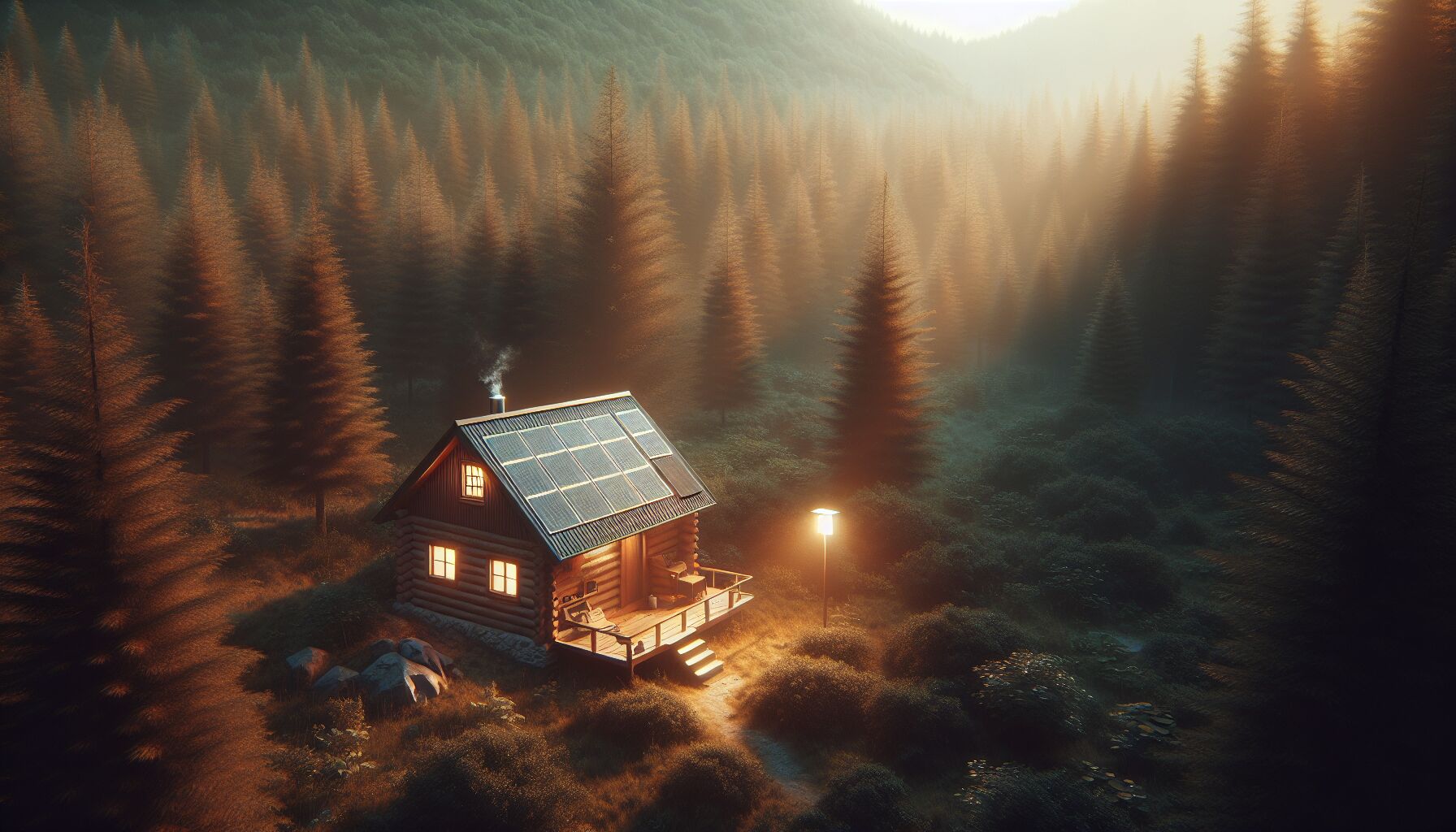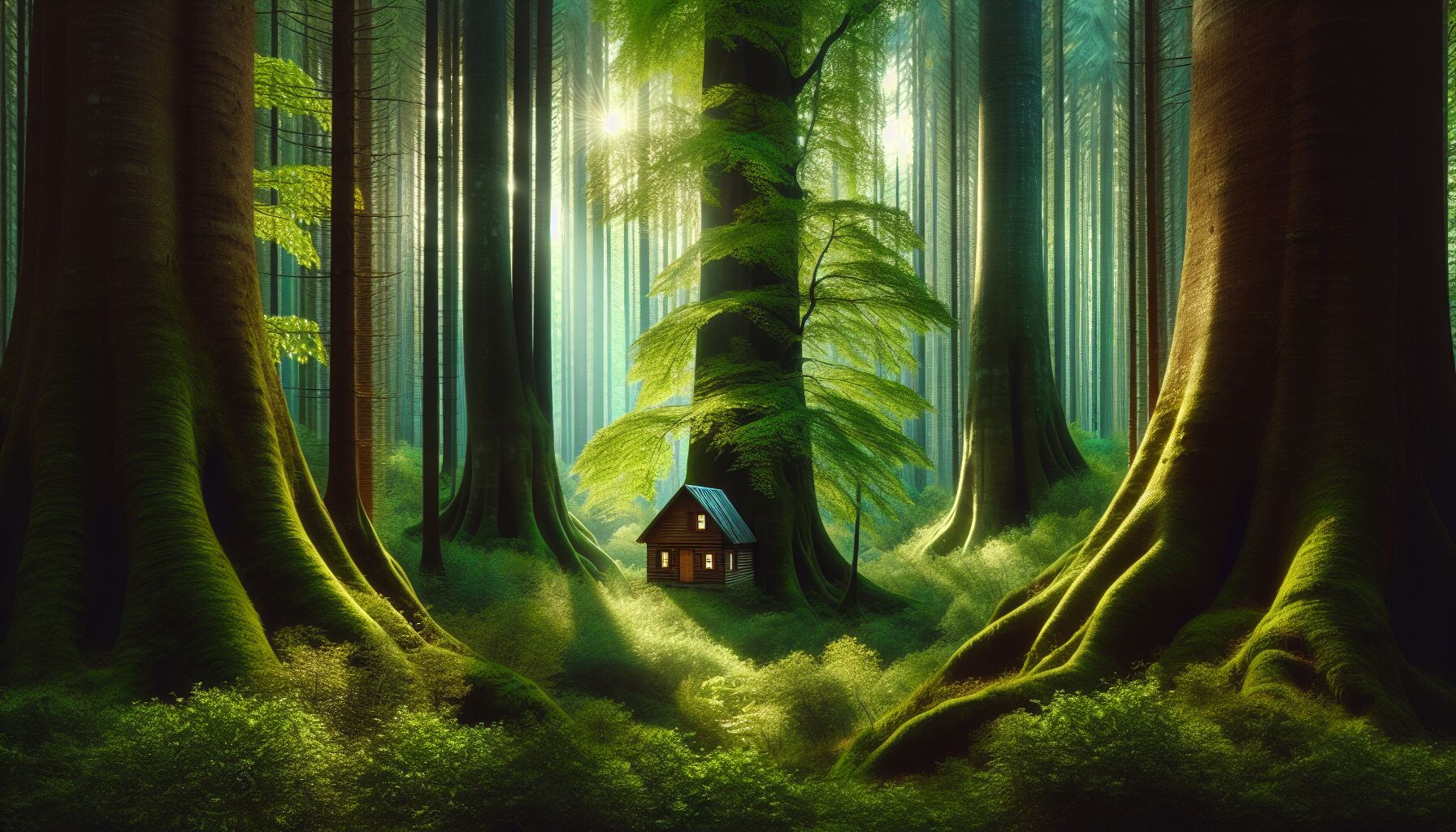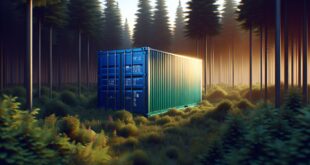 Off-grid living isn’t just a trend; it’s a pulse beating through the hearts of those yearning for a deeper connection to the earth and a simpler existence. But what’s driving this fervor for disconnecting from conventional systems? At its core, the movement is a response to a society that many feel has strayed too far from genuine, self-reliant ways of living. For some, it’s about embracing the freedom and autonomy that comes with producing your own power, collecting rainwater, and growing food. The dream is to break away from the tangled web of dependence on modern utilities and, with it, the mounting bills and governmental oversight often described as overbearing.
Off-grid living isn’t just a trend; it’s a pulse beating through the hearts of those yearning for a deeper connection to the earth and a simpler existence. But what’s driving this fervor for disconnecting from conventional systems? At its core, the movement is a response to a society that many feel has strayed too far from genuine, self-reliant ways of living. For some, it’s about embracing the freedom and autonomy that comes with producing your own power, collecting rainwater, and growing food. The dream is to break away from the tangled web of dependence on modern utilities and, with it, the mounting bills and governmental oversight often described as overbearing.
Yet, let’s not view this through rose-tinted glasses. Achieving this lifestyle requires more than just a spirited desire; it demands grit and know-how. Picture the daily rhythm of tending to solar panels or maintaining a composting toilet — tasks that require dedication, precision, and a dash of patience. It’s all part of the allure, though, isn’t it? The personal triumph when your home lights up solely through energy you harnessed is unparalleled.
While each off-grid enthusiast has their own story, a common thread often wends through — dissatisfaction with how urban environments are managed, or shall we say, controlled? The control, for some, takes the form of rigid off-grid laws and self-sufficiency restrictions that can seem, to the discerning eye, like a push against independence and innovation. Governmental regulation sometimes appears as a looming figure, standing at the gate, questioning those brave enough to shake up the status quo.
For those who crave walking on fresh soil outside the cycle of paychecks and power lines, it’s about more than leaving the city behind—it’s a step toward reclaiming autonomy. Henry David Thoreau captured a similar sentiment, famously assuring us, “Simplify, simplify.” And perhaps this is where off-grid living finds its deepest resonance; in simplifying, we often gain clarity. Sure, the journey can be peppered with challenges and cold nights fixing a leaky roof, but for many, the daily practice of self-reliance grants a freedom that feels like coming home.
Each morning welcomes opportunities to live by nature’s clock, finding rhythm in the sun’s passage and the cycles of the moon. It’s like an age-old dance that our ancestors knew well—one that modern living has somewhat forgotten. In aligning our heartbeat with that of the planet, off-grid living restores a sense of balance often touted as unreachable amidst the ceaseless buzz of city life. Whether or not you’re ready to abandon the grid and dive into the elements, understanding this movement sheds light on a deeper quest for authenticity that’s calling many to live by their own rules, unshackled and awake.
Could it be that this shift toward unchained existence is not just about the tangible—a plot of land and a dream—but about something larger? Something echoing the call of freedom from societal mandates? This is the question that resonates with every soul who takes their first steps on the off-grid path.
Challenges posed to urban infrastructure
Breaking free from the conventional grid is undeniably enticing, yet the shift isn’t all sunshine and rainwater—especially not in bustling urban landscapes. Let’s picture cities as grand symphonies, each player a utility, piece of infrastructure, or municipal service working in harmony. When someone goes off-grid, deciding to be the lone violinist playing their own tune, it can throw the arrangement into disarray. See, urban infrastructure is like a well-oiled machine, meticulously designed for efficiency—every home plugged into the grid, every drop of water accounted for in complex systems. Pulling away challenges this delicate balance and presents a conundrum for city planners and policymakers alike.
Imagine a city block where every resident suddenly swears off electrical connections, chooses solar panels instead. It might sound idyllic, but without oversight, it could lead to inconsistencies and safety hazards. Planners worry about potential gaps in emergency services, as they’re typically integrated with existing systems. The choreography of energy distribution gets disrupted, and not every city’s ready to handle that kind of improvisation. What’s more, issues like waste management and water supply can become thorny when folks move off-grid without robust systems in place. Self-sufficiency, while noble, sometimes clashes headlong with the realities of communal living.
And let’s tackle the elephant in the room—government control. For those yearning for independence, off-grid living often symbolizes rebellion against governmental oversight, but it isn’t just about self-sufficiency restrictions. Many argue there’s a public safety angle that can’t be ignored. Cities, after all, have a vested interest in making sure all residents are safe and accounted for, a task that becomes trickier when people decide they’re better off handling things solo. Government control here isn’t always about stifling independence; sometimes it’s about managing a sprawling urban organism where everyone must pull together for the public good.
An off-grid person’s lifestyle might not be as predictable, posing challenges that can spur town planners to enforce off-grid laws that seem, at first blush, restrictive. While it’s tempting to cast bureaucracy as the villain, it’s more nuanced in reality. Their framework exists to weave harmony into the societal structure, ensuring no one’s left in the dark, figuratively and literally.
So, are cities downright banning off-grid living as some kind of blunt instrument or is it more a nuanced dance, attempting to marry independence with collective well-being? This is where community conversations become pivotal. It’s about finding ways to innovate around these challenges, blending the old with the new. That age-old pursuit of freedom is undeniably stirring, a call to regalvanize and rethink—perhaps even guiding us toward a future where the grid and the off-grid coexist more fluidly.
“Change is the law of life,” John F. Kennedy once said, reminding us that not all adaptations are easy, but often necessary. As off-grid dreams bump against urban realities, it’s clear that steering this course requires not just planting the future but nurturing a dialogue between governance and green aspirations.
For those interested in how urban dynamics operate, resources like the U.S. Department of Energy can offer insight into the complex web of energy management and how it knits our communities together. The balance requires us to walk a tightrope with agility—embracing self-reliance without unraveling the community fabric.
Legal and environmental considerations
 Stepping into the world of off-grid living isn’t just about favoring autonomy over urban comforts; it’s a dance with laws and environmental ethos that govern our shared spaces. Here’s the thing: when people choose to live apart from the grid, there’s a tapestry of legalese intertwined with environmental stewardship that they must navigate. Imagine each regulation as a thread linking individual ambitions with broader societal needs.
Stepping into the world of off-grid living isn’t just about favoring autonomy over urban comforts; it’s a dance with laws and environmental ethos that govern our shared spaces. Here’s the thing: when people choose to live apart from the grid, there’s a tapestry of legalese intertwined with environmental stewardship that they must navigate. Imagine each regulation as a thread linking individual ambitions with broader societal needs.
Legal frameworks can feel like an endless sea of red tape, especially when they sometimes seem to hinder more than help. Self-sufficiency restrictions, for instance, might be viewed as arbitrary obstacles to personal freedoms. Yet, they often emerge from genuine concerns about communal equilibrium. For instance, without proper guidelines, a boom in off-grid homes could strain local ecosystems, as water and energy systems are tightly woven into the fabric of city planning.
Consider the layers of government control like the branches of a vast tree—the trunk supports society, while each branch seeks to maintain harmony. Deviation from this structure, such as constructing a self-sustained abode without oversight, might lead to unforeseen environmental consequences. The dance between individual desires and collective harmony becomes all the more delicate. Regulatory bodies, from zoning boards to environmental agencies, step onto this stage, extending guidelines meant to preserve resources and safeguard communities from haphazard developments.
And why do these environmental considerations matter? Well, in many ways, promoting sustainable off-grid systems can foster a healthier balance with nature, encouraging renewable energy use and reducing carbon footprints. It’s a bit like finding the right rhythm in an age-old tune, where the notes of independence meld with the beats of environmental consciousness.
However, too rigid an approach can stifle innovation—as if asking a flock of birds to fly in a straight line. There’s a call for flexibility, for laws that acknowledge and adapt to the nuances of off-grid living without dismissing the importance of environmental guardianship. Local initiatives and government policies can be pivotal here, perhaps working more as guides than gatekeepers.
It’s about finding pathways where autonomy and sustainability intersect seamlessly. Often, this means dialogue: between citizens who crave freedom and policymakers tasked with safeguarding shared spaces. When such conversations lead to innovative solutions, well, that’s the sweet spot—where off-grid laws do more than restrict; they enable a co-creation of new living paradigms.
To dive deeper into these aspects, those contemplating or practicing off-grid living can benefit from resources like the Urban Institute for insights into policy impacts and the Nature Conservancy for understanding environmental stewardship. The interplay of law and environment offers a rich narrative, one that doesn’t merely dictate the rules of the game, but also shapes the playing field in our pursuit of self-reliance.
 DS Haven In Light Of Things
DS Haven In Light Of Things





